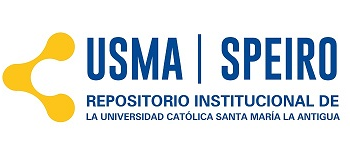Historia constructiva del Complejo Monástico de la Compañía de Jesús en el Casco Antiguo de Panamá y análisis de su tutela.
DOI:
https://doi.org/10.37387/ipc.v6i2.86Keywords:
Historical Monument, Architectural Heritage, Urban Heritage, UNESCO Tutelage, Cultural Heritage ConservationAbstract
Abstract.
The Complex of the Society of Jesus has been formed in its constructive history, by buildings and churches made in the late seventeenth and mid-eighteenth century that represents significant stages in the development of Spanish colonial society in Panama and its premises. Its attributes are part and transmit the "Outstanding Universal Value" of Panama's Old Quarter, which are reflected in the urban layout, the size and distribution of assigned lots of land and initial strength characteristics made by religious orders inside this Historical Center.
At present, the land that occupied their buildings are part of a single unit of recognized urban, architectural and historical value due to the evolutionary process that enclose the aesthetic and constructive characteristics of its Complex, to its original condition as an "urban group" and to the religious and academic and moral importance that the Order of the Society of Jesus made from its beginnings as a Seminary College in the 17th century and first decades of the 18th century until the Royal and Pontifical University of San Javier in Panama in the 18th century, which, moreover, it was the first university in the country and sought to achieve a position of recognition in America, at the level of the prestigious Universities of Bogotá, Quito and Lima.
Downloads
Published
How to Cite
Issue
Section
License
1. The authors preserves the patrimonial rights (copyright) of the published works, and favors and allows their reuse.
2. The journal (and its contents) use Creative Commons licenses, specifically the CC BY NC SA type, where: "the beneficiary of the license has the right to copy, distribute, display and represent the work and make derivative works provided you acknowledge and cite the work in the manner specified by the author or licensor."
3. They can be copied, used, disseminated, transmitted and exhibited publicly, provided that: i) the authorship and the original source of its publication (magazine, publisher and URL, DOI of the work) are cited; ii) are not used for commercial purposes.
4. Conditions of self-archiving. Authors are encouraged to electronically disseminate the post-print versions (version evaluated and accepted for publication), as it favors their circulation and dissemination, increases their citation and reach among the academic community.











